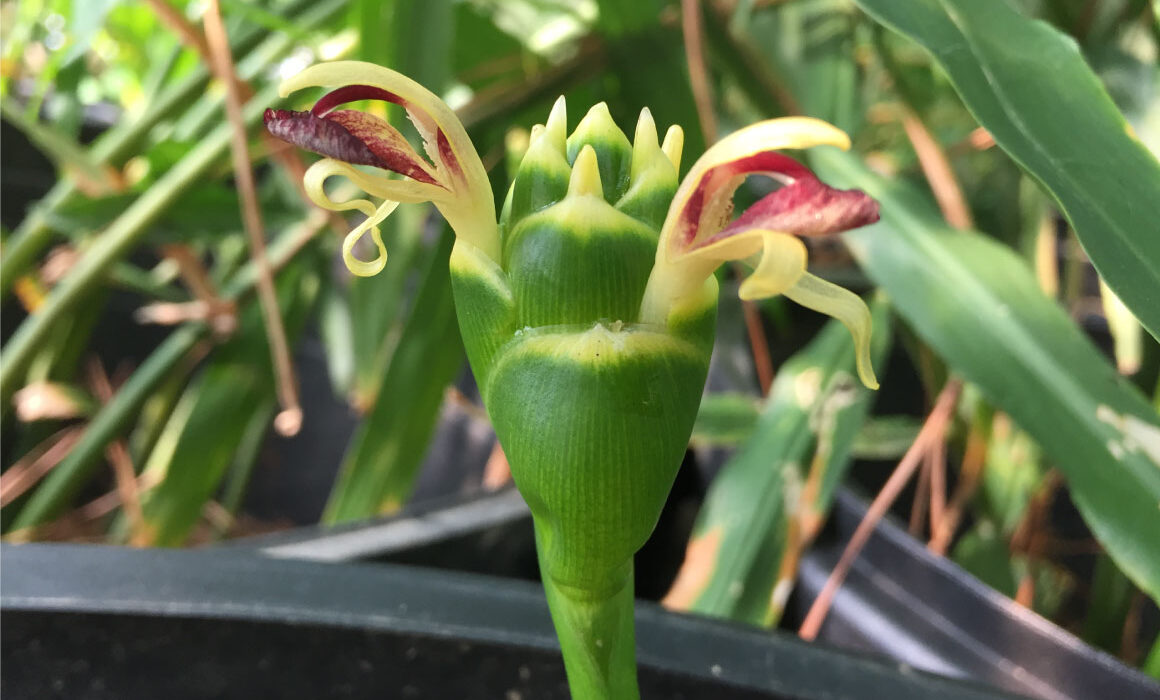

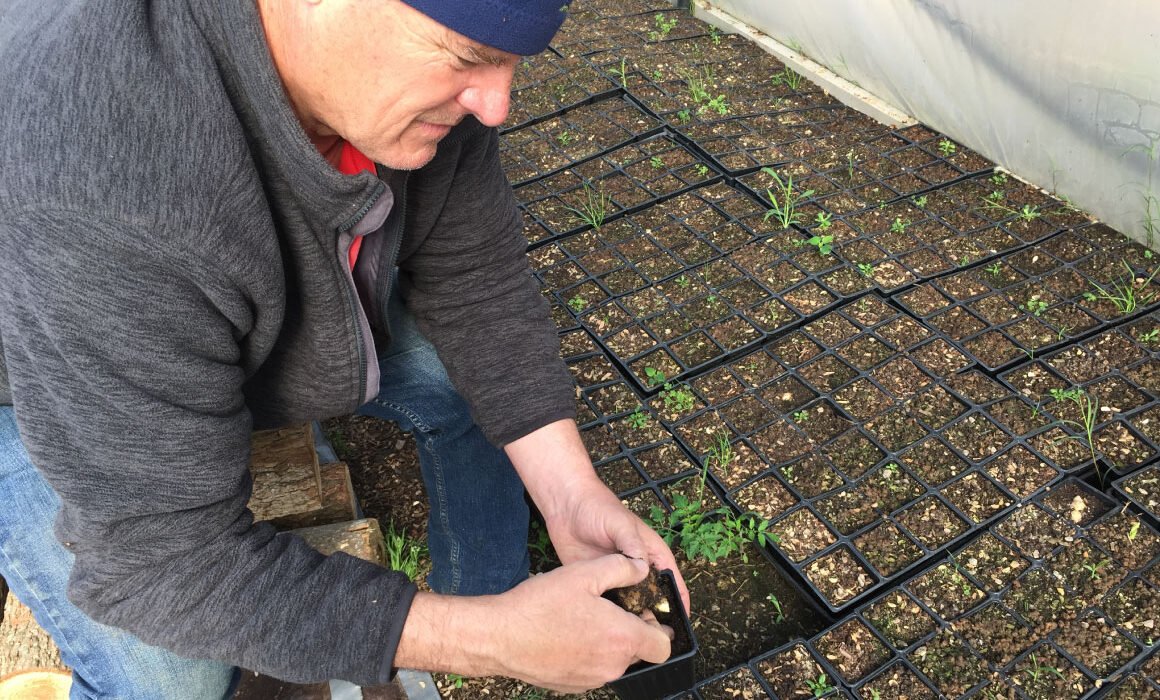
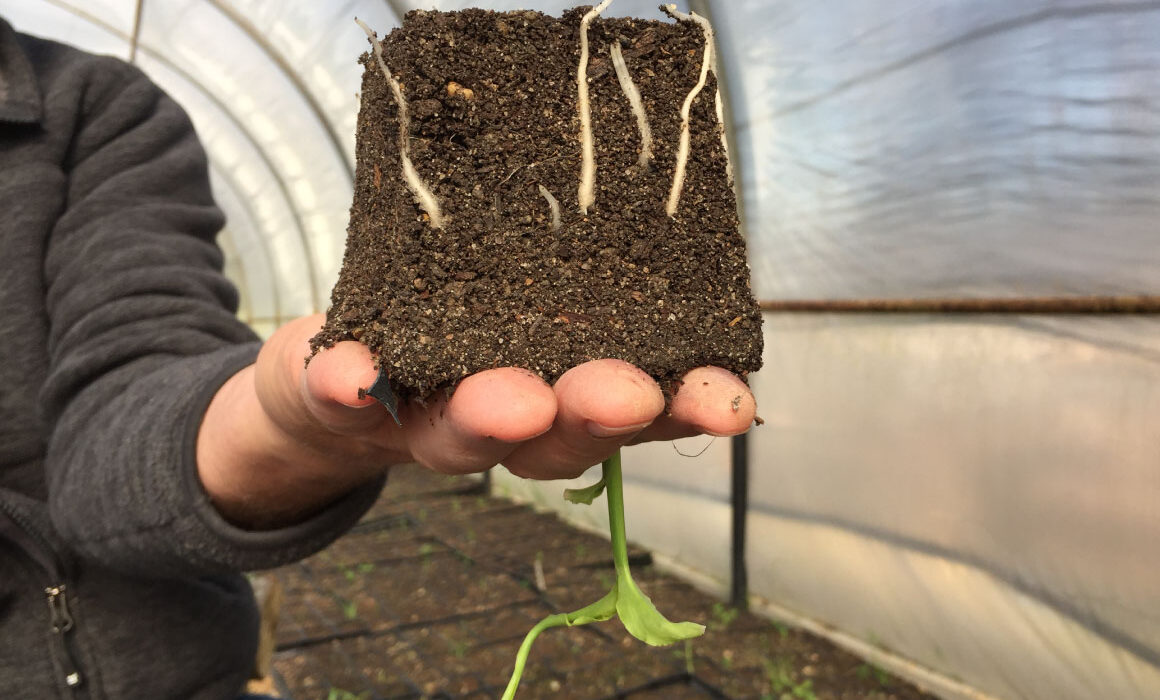
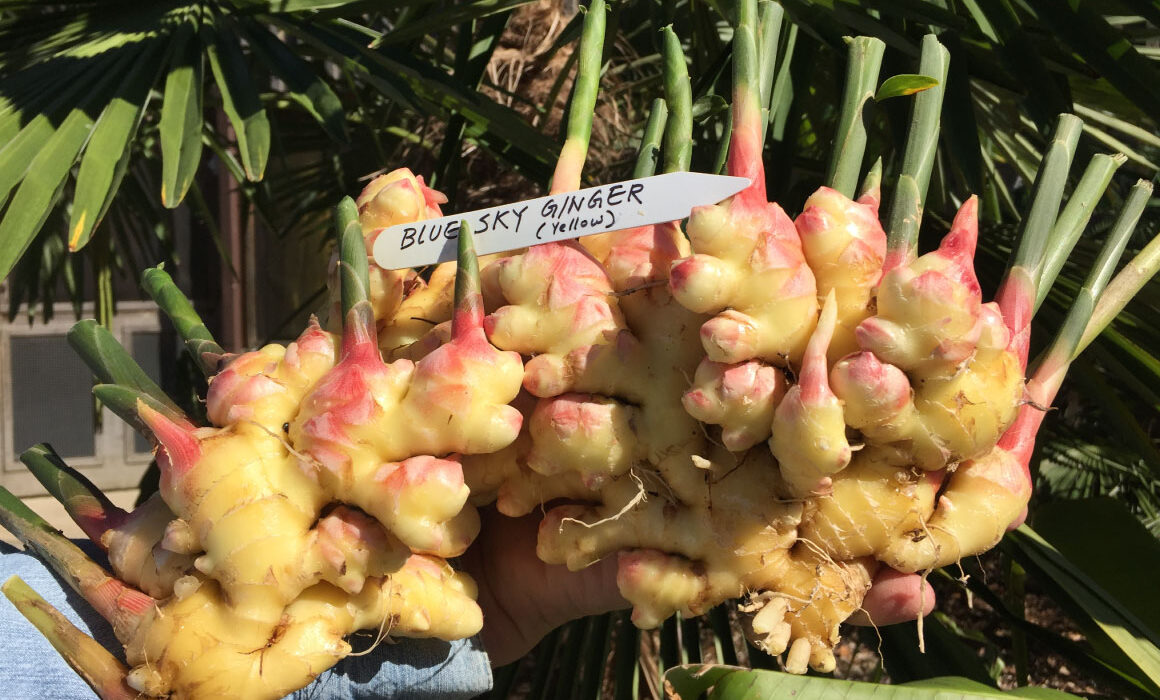
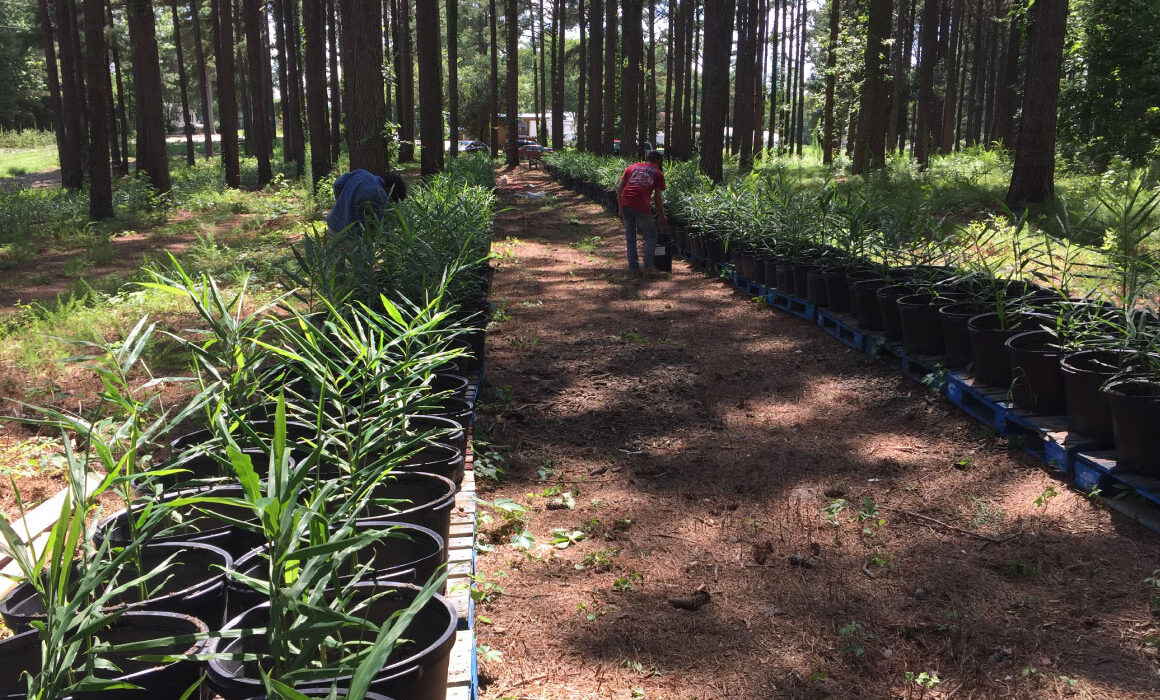
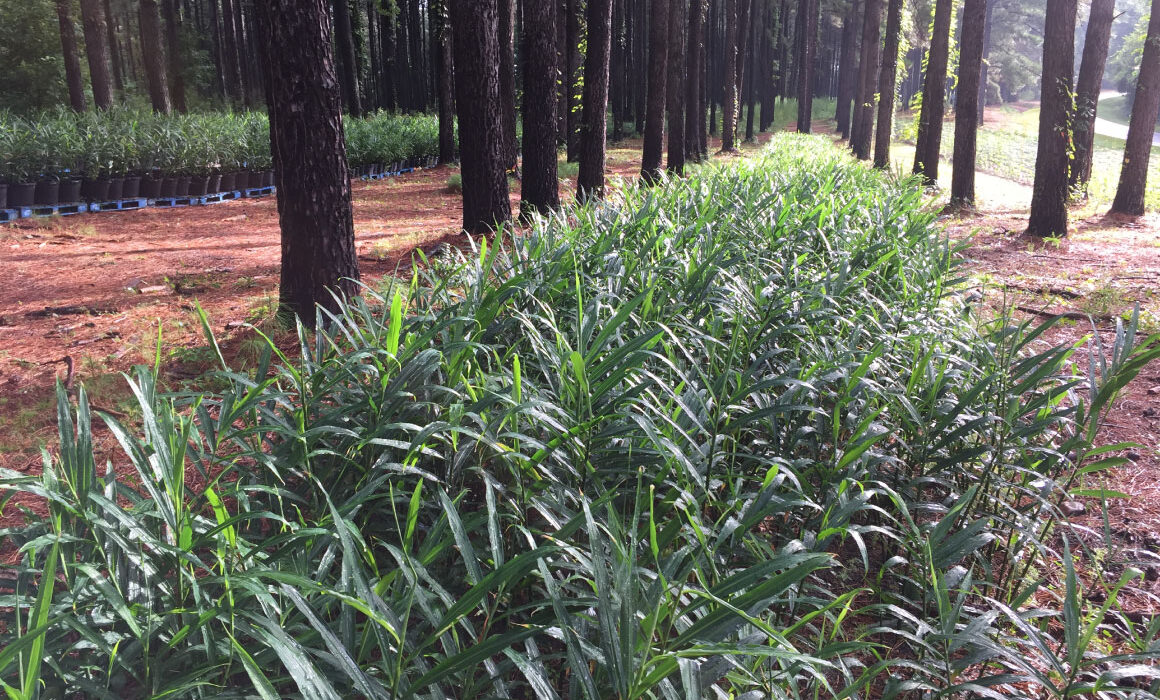
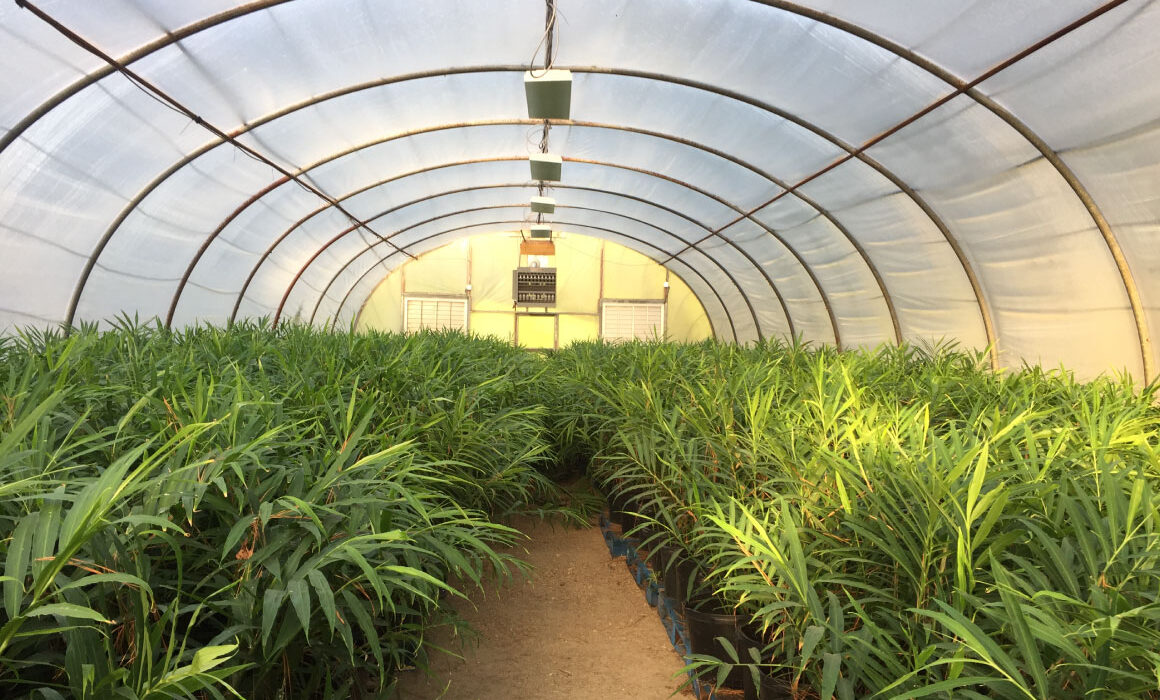
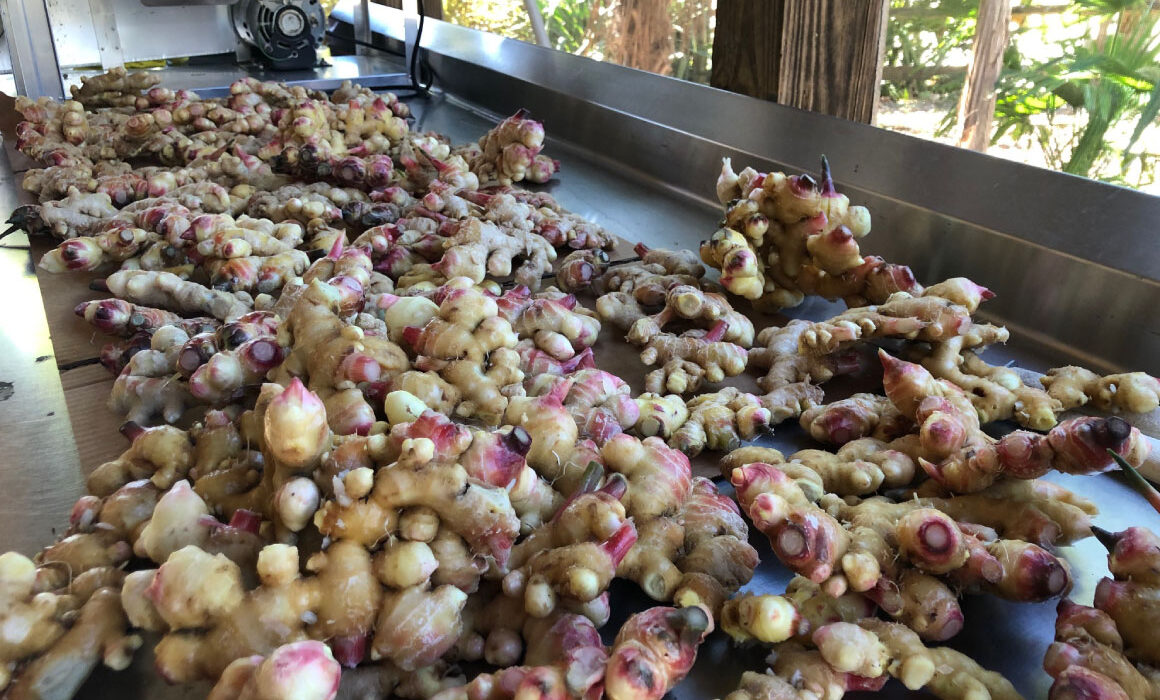
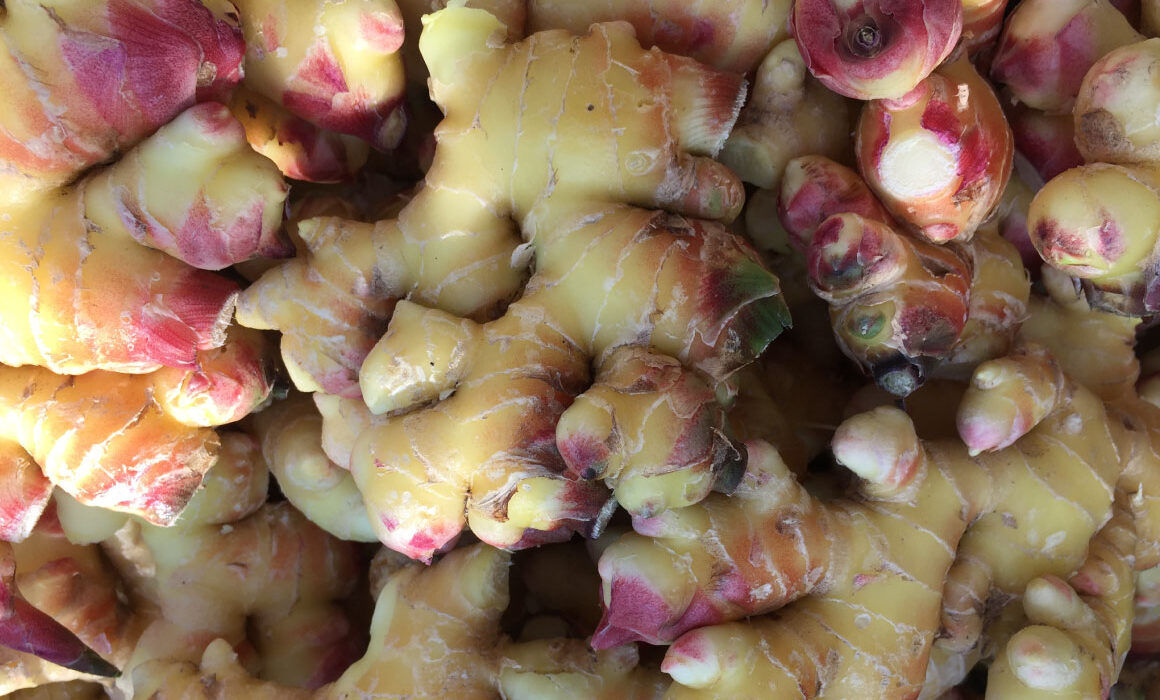
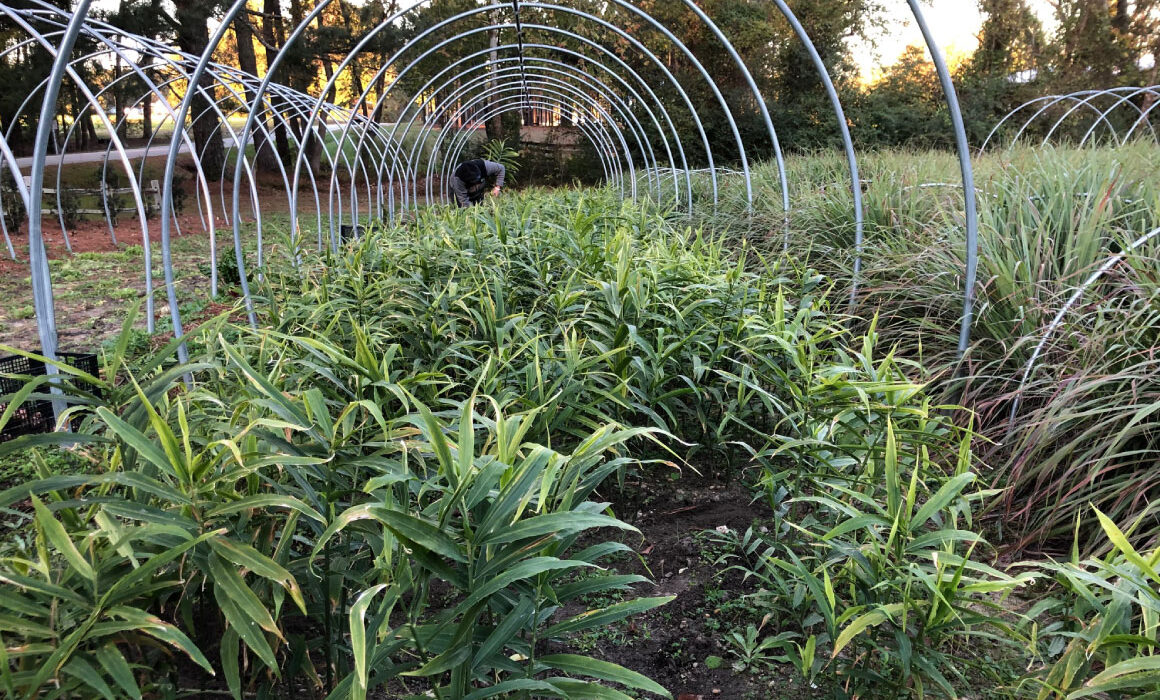
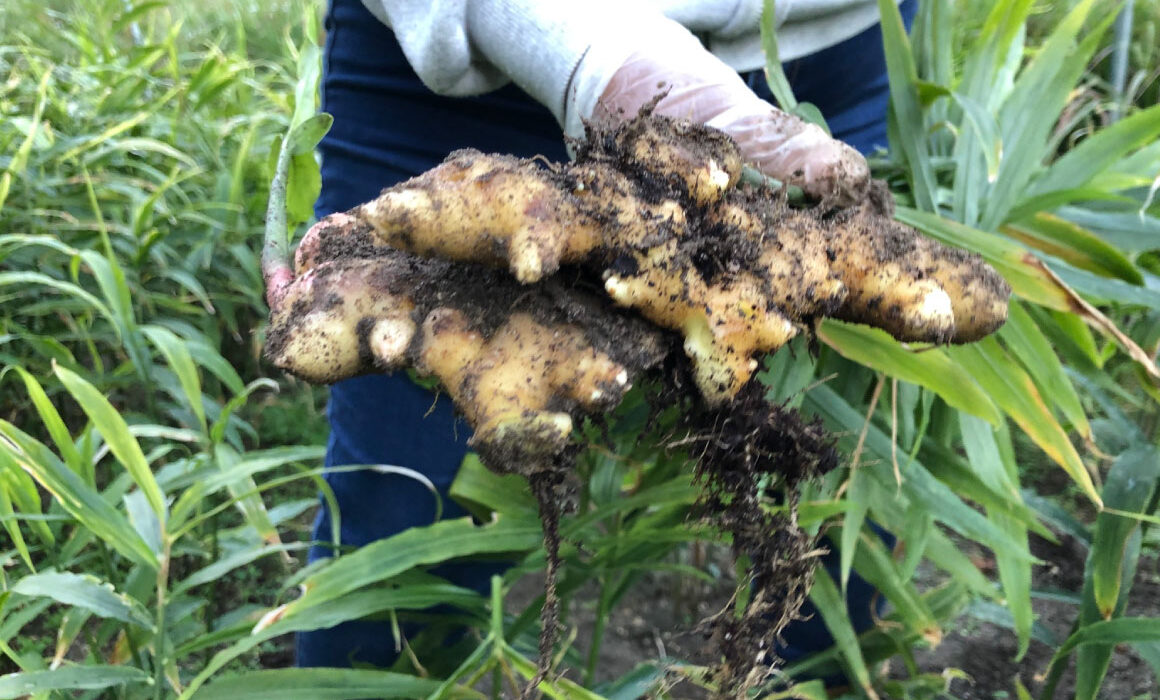
2021 November News
November is the month we begin harvesting ginger in our neck of the woods. Ginger takes somewhere in the neighborhood of about 8–10 months for the roots to reach maturity. We start seed ginger (small pieces of rhizomes) in 3″ pots inside the greenhouse in early February. The small root segments, kept warm and moist, sprout around mid-April. By early May the temperature outside is warm enough for transplanting the small plants directly into the field. Here, they are tended to until harvest.
We plant two varieties. One is a large yellow variety and the other is a less common blue variety. The blue variety is prized in culinary circles for its depth in flavor. It is my favorite. “Blue”, also known as galangal, is tender, sweet, and not as hot as common ginger, and it has a slight hint of citrus. Sushi aficionados go crazy over blue ginger.
Ginger likes rich moist soil, but not soggy soil, and it prefers filtered sunlight. We have found that ginger seems to grow really well under the canopy of our pine trees. We have also incorporated shade cloth over our high tunnels to simulate this type of filtered light. High tunnels also give a bit more control over a specialty crop like ginger by being able to begin the growing season earlier and end the growing season later.
Other than providing the right growing conditions — ginger is not too hard to grow. We usually plant with a timeline to start harvesting a week or two before first frost. If we get more growing days than anticipated, as we did this year, that is all well and good. If the crop gets hit with a pretty good freeze, the roots will be fine as long as they are harvested soon thereafter.
Harvesting ginger is fun, and in rich loamy soil the roots pull up easily. We snip off what remains of the top, shake the roots to remove any remaining soil and then give it a quick rinse in the washroom. After that, we store the ginger roots in a dark, dry, cool but not cold place. Ginger is best when consumed or processed shortly thereafter. Fresh baby ginger is the best, but its shelf life is short lived. There are many ways to preserve ginger. Here are a few ideas for what to do with fresh ginger over the holidays: ginger beer, ginger tea, ginger cookies, ginger jelly candy.
There is nothing better in the whole wide world than the collective smell of fallen oak leaves and ginger as it is pulled from the soil in mid to late November.
Eat a Peach.
Steve